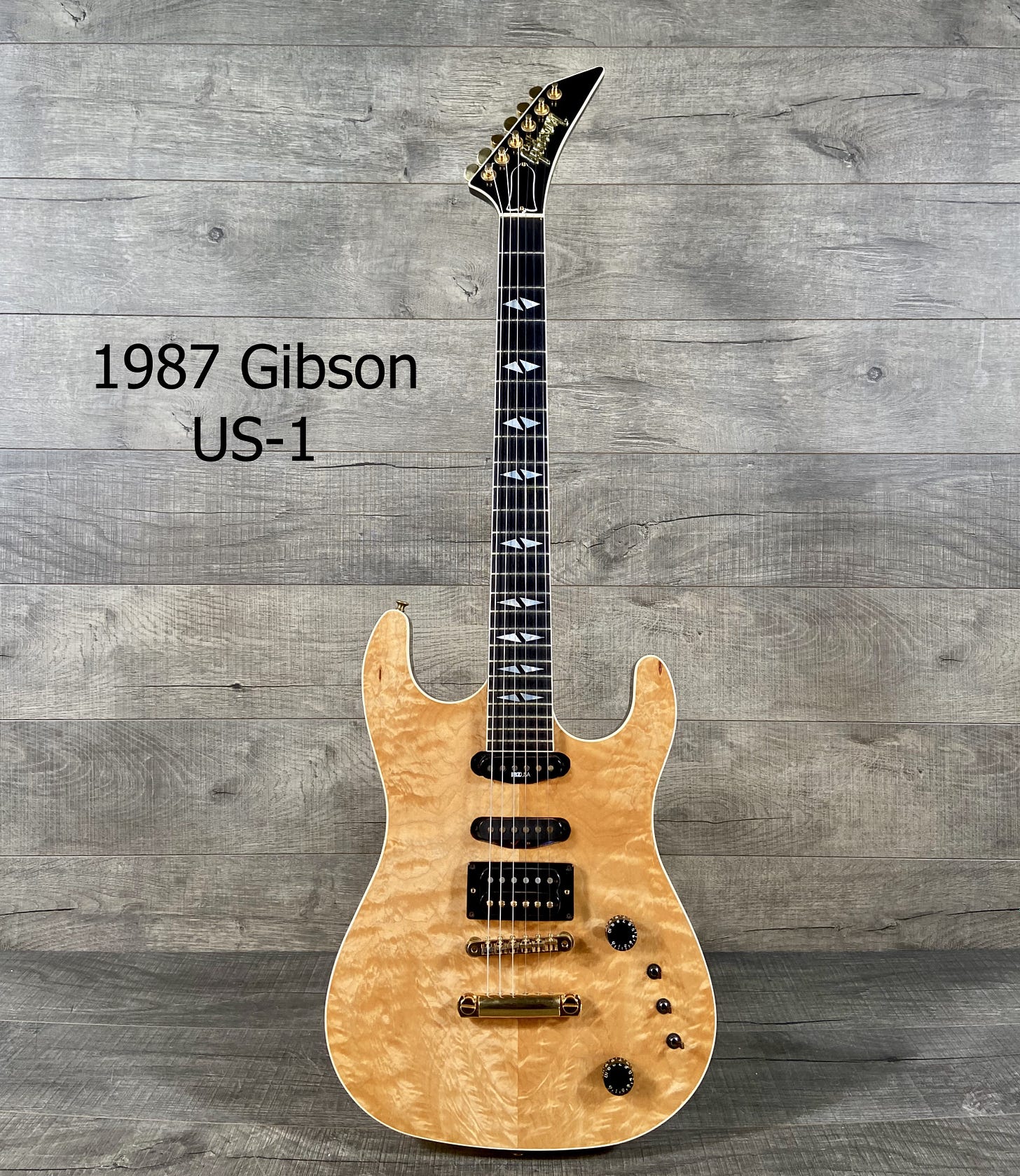Guitar Gavel Gear Of The Week with Will Ray, Founding member of The Hellecasters - GAS can guitar
It's a SIN!
This is a relic from Will's cigar box G.A.S. days. An $80 purchase on eBay and some elbow grease.
I'll show you what she can do at 2:05
The moral of the story, keep your mind open and if you see a guitar that is cheap and interesting, go for it!
Gibson’s first version of a super strat debuted in 1985, the Q series of guitars and they had a two-year run. These were based on Gibson’s Victory models that came about in 1981, essentially Gibson’s offset version of a Stratocaster. The two Victory models are pictured below, the MV-II and MV-X, production ended in 1985 when the Q guitars showed up with pointy headstocks and a Kahler. Notice the similarities?
There were four models in the Q series, the Q-100, 200, 300, and 400. The devil is in the details and for clarity sake, the naming convention changed in late 1985 to Q2000, 3000, and 4000. The Q-100 did not receive a name change. They were all the same body shape with different pickup configurations. Production was short-lived, ending in 1987.
Those were followed by the Gibson WRC in 1987, designed and named after Wayne R. Charvel and production lasted one year. The one pictured below is a “Showcase” edition featuring active EMG pickups and a double locking Floyd Rose. Swing and a miss…
1986 was the final year of Gibson’s Norlin Ownership era. Whether there was internal turmoil, confusion, or Gibson was absolutely dead set to get into the shredder game they weren’t going down without a fight.
Designed in tandem with the WRC, Gibson introduced the US-1 and U-2 in 1987.
The US-1 was the premium model of the two, adorned with a figured maple top, binding everywhere, and the raised Gibson headstock logo. There was even a “Select” US-1 that had a figured maple back instead of being finished in black, extremely rare.
These were advertised as being very light and Gibson went out of their way to make that happen by using a basswood body with a balsa wood core. Approximate weight, just over 7 lbs.
The US-1 sports a couple of aesthetic nods to Gibson’s heritage.
The raised headstock logo is a prized adornment originating from the Korina Flying V. The split diamond fret inlays first appeared on Trini Lopez’ guitars in 1964 and this may have been the first time they were deployed since.
Diving into the details once again, Gibson also offered a US-3 which featured three P-90 pickups and the U-2’s name changed in 1990 to Mach II. Alas, these super strats were retired in 1991, but Gibson wasn’t done yet and followed up with the M-series of guitars (we’ll save those for another day, it’s messy trying to make sense of it all).
Could Gibson have done better? One thing is for sure, it’s a double-edged sword being Gibson and Fender. The customer’s perception of what is a Fender or what is a Gibson is very tough to overcome. Both brands have given up trying to deliver guitar shapes and styles that don’t fit their legacy mold. Gibson bought Kramer out of bankruptcy in 1997 and Fender’s portfolio includes Jackson, Charvel, EVH, and Gretsch.
1987 Gibson US-1 specs: Basswood/Balsa body, Maple set-neck (discrepancies exist), Ebony fretboard, Trini Lopez style inlays, Gibson single coils and humbucker, Push/push pot coil splitter, Master volume and tone, Individual pickup selectors, Stop tailpiece or Kahler tremolo
Guitar Gavel Podcast with Brian Stoltz, Part 2 - The Foundation
Leading up to the April 2nd debut of Brian's latest album, "New World Rising," this is the second in a three-part conversation with Brian in which we focus on the first half of his career.
Brian and I discuss his early musical interests, a blend of pop, R&B, soul, blues and how the culture of New Orleans and southern Louisiana influenced his style. He tells us about his introduction to The Neville Brothers and shares memories of the near decade he spent touring and recording with the band. For the uninitiated, Brian also offers insight to the rigors of recording an album.
"New World Rising" was recorded in Sweet Mix Studio in Slidell, LA which is where Brian joined the podcast from. Brian provided us with the foundation and flavor of this project and in the next episode we'll look at the album in its entirety.
The audio is available on all major podcast outlets and streaming services.






1 comment
Great Gavel as always. I love how Will Ray, just riffs out seamlessly in that big ole leather chair of his.